Polar bears, the iconic white giants of the Arctic, are facing an unprecedented crisis that threatens their very existence. As apex predators adapted specifically to life on sea ice, they rely heavily on this frozen platform to hunt their primary prey: seals. However, the Arctic is warming at more than twice the global average rate, causing sea ice to melt earlier in spring and form later in fall. This dramatic reduction in sea ice coverage—which has decreased by approximately 13% per decade since satellite monitoring began in 1979—directly impacts the polar bears’ ability to access their hunting grounds.
The consequences of this habitat loss are profound. With shorter hunting seasons and increasingly fragmented ice, polar bears must swim longer distances between ice floes, expending precious energy that would normally be conserved for hunting and survival. Some bears have been documented swimming more than 400 miles continuously, a physically exhausting feat that can be fatal, especially for cubs and weaker individuals. This changing environment represents not just a gradual shift but a fundamental transformation of the ecosystem upon which these magnificent creatures have depended for thousands of years.
Seal Hunting: The Polar Bear’s Primary Food Source

Polar bears have evolved specifically to hunt seals, particularly ringed and bearded seals, which provide the high-fat diet necessary for survival in the harsh Arctic environment. Their hunting technique is specialized and efficient: they wait patiently at breathing holes in the ice or stalk seals resting on ice surfaces. This method, known as “still-hunting,” allows them to conserve energy while maximizing hunting success. A single adult seal can provide a polar bear with enough fat to sustain it for more than a week, making these marine mammals an irreplaceable food source.
Without adequate sea ice, this hunting strategy becomes impossible. Polar bears cannot effectively hunt seals in open water, as seals are far more agile swimmers. The specialized hunting techniques that served polar bears for millennia are rendered useless when their icy hunting platform disappears. Studies have shown that in areas with the most dramatic sea ice loss, polar bear populations have experienced up to 40% declines in just a decade, with reduced body condition and lower reproductive rates directly linked to decreased hunting success.
The Devastating Impact of Sea Ice Loss
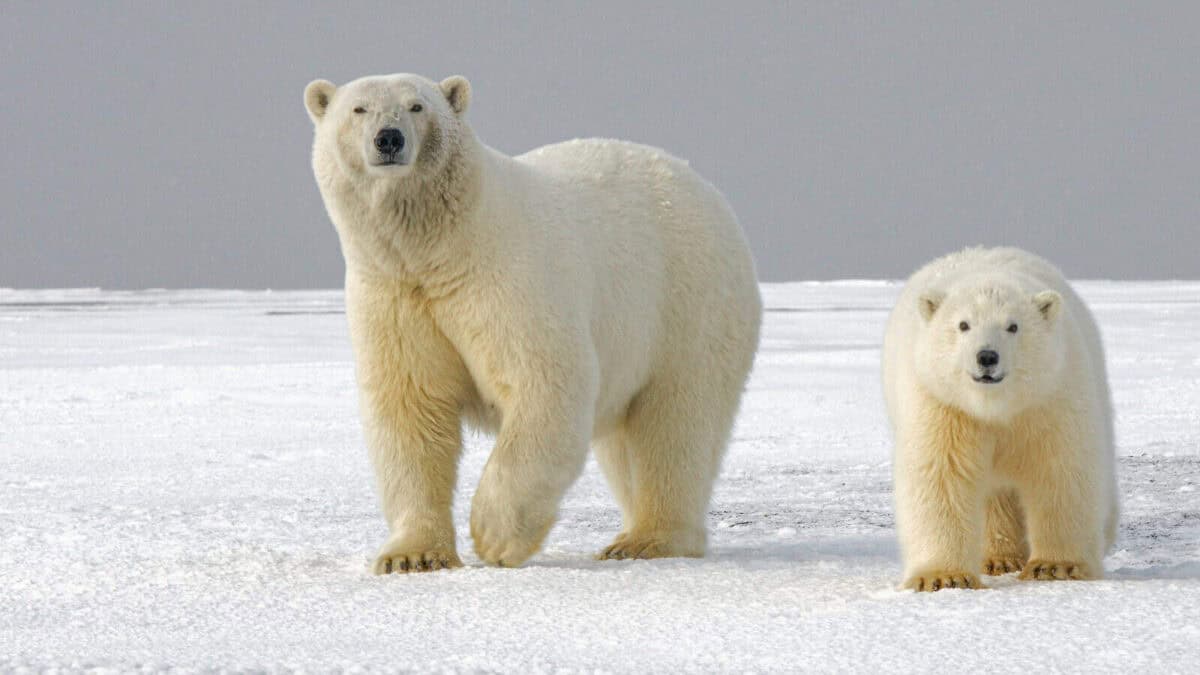
Sea ice is not just a hunting platform for polar bears—it’s the foundation of their entire ecological niche. The Arctic has lost more than 2 million square kilometers of summer sea ice since the early 1980s, an area larger than Alaska and Texas combined. This massive habitat reduction forces bears to spend more time on land, where food resources are scarce and nutritionally inadequate compared to their preferred seal diet. The timing of ice loss is particularly critical—spring is when polar bears typically accumulate the majority of their annual fat reserves by hunting newly born seal pups.
With ice breaking up earlier each year, this crucial hunting period is shortened, and many bears are forced ashore before they’ve accumulated sufficient fat stores. Research from Hudson Bay shows that for each week earlier that ice break-up occurs, bears come ashore in poorer condition. Scientists have observed that the average weight of female polar bears in this region has decreased by about 88 pounds since the 1980s—a significant reduction that directly impacts reproductive success and cub survival. The link between sea ice availability and polar bear health is clear and alarming.
Extended Fasting Periods and Starvation
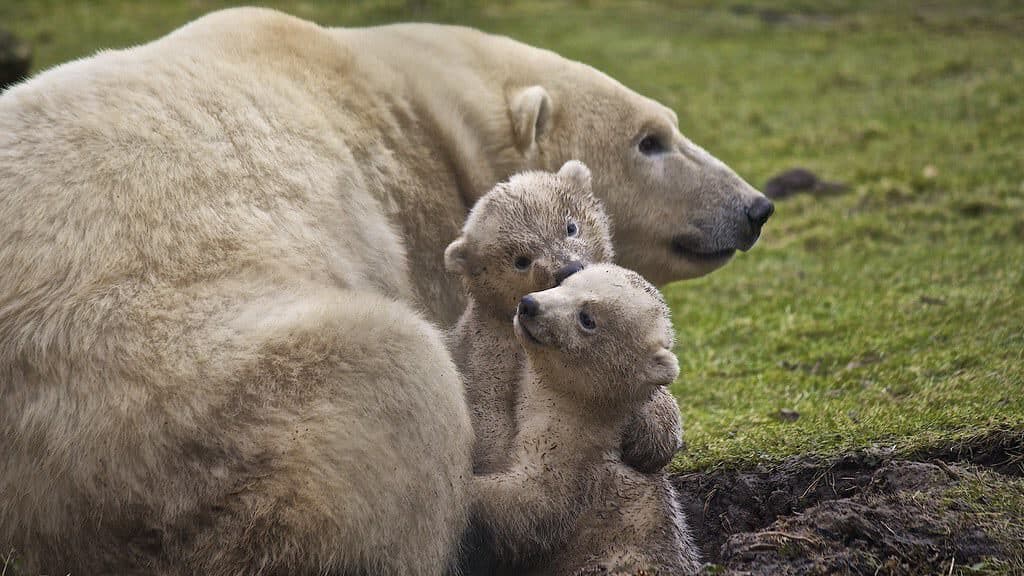
Polar bears are remarkably adapted to fasting, capable of going months without food during the ice-free season by living off accumulated fat reserves. Historically, these fasting periods were predictable and manageable. However, as climate change extends the ice-free period in many regions, bears are now forced to fast for increasingly longer periods—sometimes exceeding 180 days in southern portions of their range. This extended fasting pushes even the most resilient bears to their physiological limits.
The consequences of these longer fasting periods are severe. When fat reserves are depleted, polar bears begin metabolizing protein from their muscles, leading to significant health deterioration. Studies of bears in the southern Beaufort Sea have documented alarming cases of starvation and muscle wastage. Scientists have observed an increase in the number of emaciated bears with prominent hip bones and shoulder blades—clear signs of severe nutritional stress. Perhaps most heartbreaking are observations of female bears unable to produce enough milk for their cubs, leading to increased cub mortality and, in extreme cases, instances of cannibalism where desperate bears prey on smaller or weaker individuals.
Desperate Measures: Alternative Food Sources
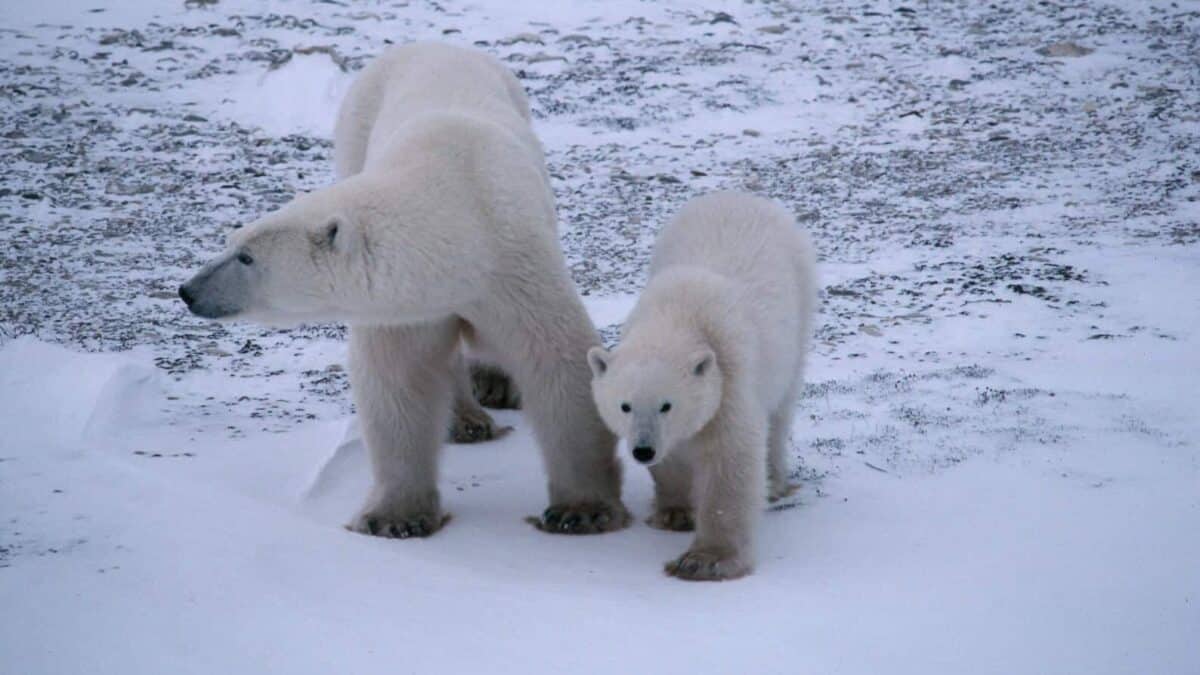
As their preferred prey becomes increasingly difficult to access, polar bears have been forced to seek alternative food sources, none of which provide the nutritional value of seals. Researchers have documented bears eating seabird eggs, vegetation, berries, and even garbage near human settlements. While these adaptations show the bears’ remarkable ability to adjust behaviorally, they represent desperate measures rather than sustainable solutions. The nutritional value of these alternative foods is simply insufficient to maintain healthy body condition.
One particularly poignant example is the increased documentation of polar bears consuming bird eggs in certain regions. While a bear might need to consume just one seal to sustain itself for days, it would need to eat thousands of eggs to obtain equivalent calories. This requires significant energy expenditure for minimal nutritional return. Similarly, though bears have been observed eating vegetation more frequently, their digestive systems are not designed to efficiently process plant matter. These dietary shifts represent not successful adaptation but rather evidence of the severe food stress these specialized carnivores are experiencing as their habitat transforms.
Human Settlements: A Dangerous Attraction

Increasingly, hungry polar bears are being drawn to human settlements in search of food, creating dangerous situations for both bears and people. Communities across the Arctic, from Alaska to Russia, have reported significant increases in polar bear encounters. In the Siberian town of Belushya Guba, more than 50 bears invaded the settlement in 2019, forcing authorities to declare a state of emergency. These desperate bears are attracted by the scent of garbage, stored food, and animal remains—anything that might provide calories.
These human-bear conflicts often end tragically for the bears. Wildlife officers are frequently forced to euthanize “problem bears” that repeatedly enter communities, posing safety risks to residents. In Canada’s Hudson Bay region, Churchill has become known as the “Polar Bear Capital of the World,” not just for tourism opportunities but because bears increasingly linger near town as they wait for sea ice to form. The town operates a “polar bear jail” where repeat offenders are temporarily held before being relocated. These interactions represent a lose-lose situation—communities face safety risks, while bears face lethal consequences or, at minimum, expend precious energy without obtaining adequate nutrition.
Mothers and Cubs: The Most Vulnerable Victims

Female polar bears and their young cubs are particularly vulnerable to food scarcity. A nursing mother must maintain not only her own body condition but also produce enough fatty milk to nourish her rapidly growing cubs. Under optimal conditions, cubs stay with their mothers for about 2.5 years, learning crucial hunting and survival skills. However, in food-stressed environments, researchers have documented concerning behavioral changes, including earlier family separations and increased cub mortality.
The statistics are heartbreaking. In some populations experiencing the most severe ice loss, cub survival rates have plummeted by more than 50%. Scientists have observed emaciated mothers unable to produce sufficient milk, leading to malnourished cubs that cannot withstand the harsh Arctic conditions. Perhaps most telling is the decrease in triplet litters, once common in healthy polar bear populations but now exceedingly rare in areas with significant sea ice loss. Female bears in poor condition typically produce fewer cubs per litter, and those they do have face diminished chances of survival. This reproductive decline threatens the long-term viability of many polar bear populations.
Population Decline and Conservation Status
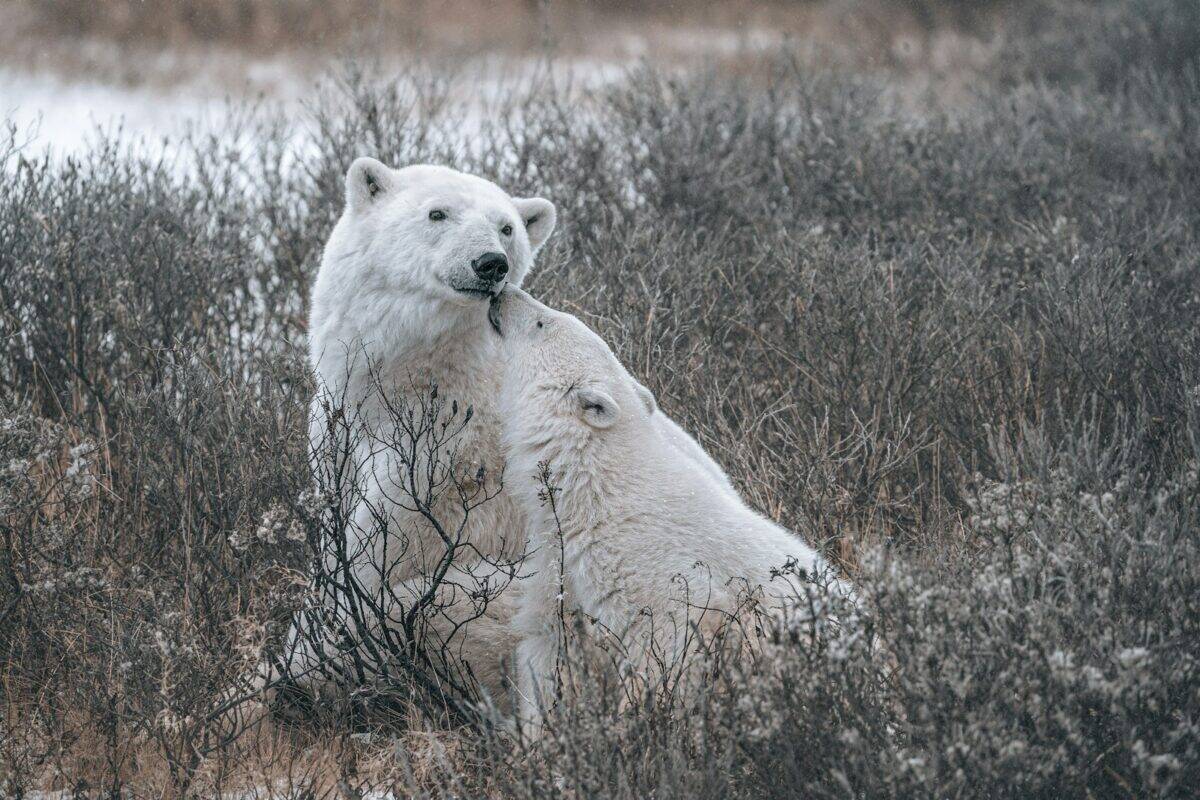
The cumulative impact of food scarcity is reflected in declining polar bear numbers across much of their range. Of the 19 recognized polar bear subpopulations, the International Union for Conservation of Nature (IUCN) reports that four are declining, with insufficient data on several others. Overall, the global population—estimated at approximately 26,000 bears—is projected to decrease by more than 30% within the next three generations if current trends continue. In 2008, the polar bear became the first species listed under the U.S. Endangered Species Act primarily due to threats from climate change.
The decline is not uniform across the Arctic, highlighting the complex relationship between sea ice patterns and bear populations. Bears in the southern reaches of their range, such as Hudson Bay and the southern Beaufort Sea, are experiencing the most dramatic population reductions. Meanwhile, some high-Arctic populations remain relatively stable for now, though projections suggest they too will face similar challenges as warming continues. Scientists warn that without significant climate action, two-thirds of the world’s polar bears could disappear by 2050—a staggering potential loss that would forever alter the Arctic ecosystem.
The Ripple Effects on Arctic Ecosystems
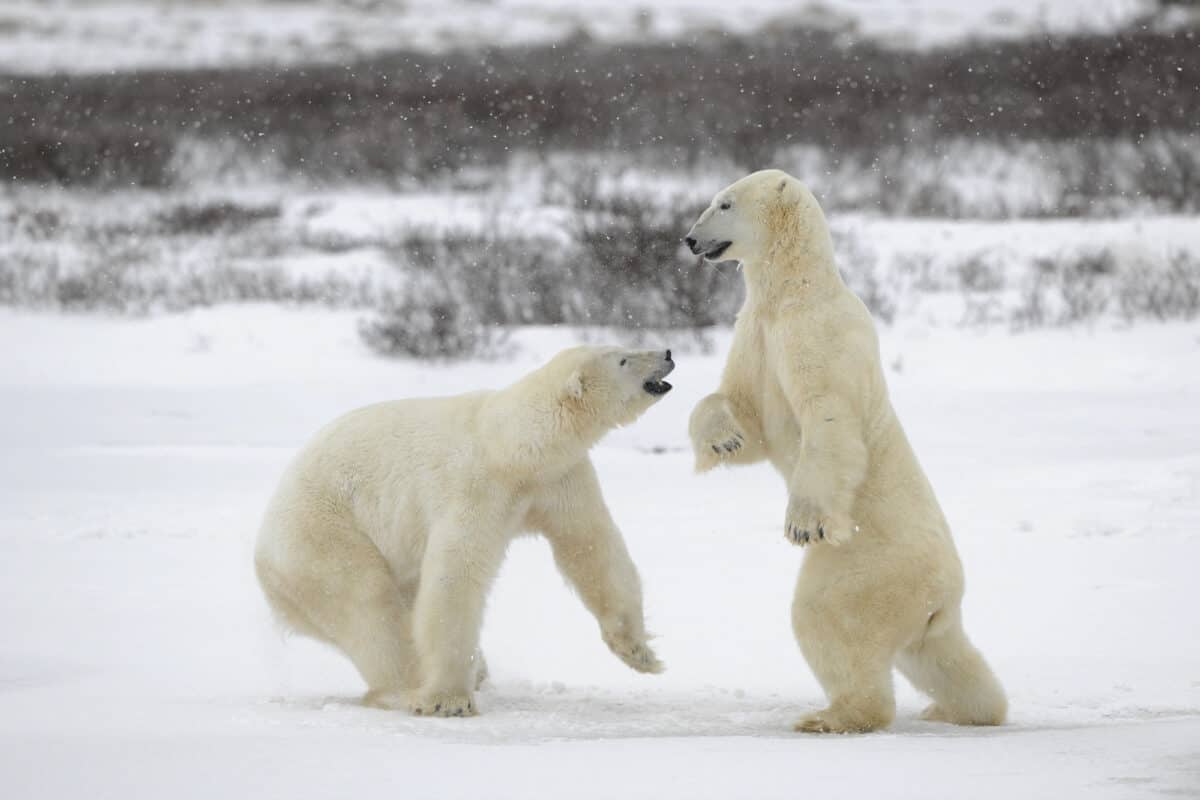
The struggle of polar bears extends beyond the species itself, creating ripple effects throughout the Arctic food web. As apex predators, polar bears play a crucial role in maintaining ecosystem balance. Their predation on seals helps regulate seal populations, which in turn affects fish populations and other marine species. The decline of polar bears disrupts these carefully balanced relationships, potentially leading to cascading ecological changes that scientists are only beginning to understand.
Furthermore, polar bears contribute to nutrient cycling in the Arctic. When they hunt seals on sea ice and bring the carcasses onto land, they transfer marine nutrients to terrestrial ecosystems. This process fertilizes vegetation and supports diverse Arctic plant and animal communities. As bears spend less time on sea ice and more time fasting on land, this important nutrient transfer is reduced. The loss of polar bears thus represents not just the decline of an iconic species but a fundamental alteration of ecological processes that have evolved over thousands of years in one of Earth’s most extreme environments.
Climate Change: The Root Cause

At the heart of the polar bear’s food crisis lies human-caused climate change. The burning of fossil fuels and resulting greenhouse gas emissions have warmed the planet, with particularly dramatic effects in the Arctic. Since the pre-industrial era, the Arctic has warmed by about 3°C—more than twice the global average. This amplified warming, known as “Arctic amplification,” occurs because as white, reflective sea ice melts, it exposes dark ocean water that absorbs more solar radiation, creating a self-reinforcing warming cycle.
Climate models project that the Arctic could experience ice-free summers as early as 2035 if current emission trends continue. Such a scenario would be devastating for polar bears, effectively eliminating their hunting platform during crucial feeding periods. The science is clear: without rapid, substantial reductions in greenhouse gas emissions, sea ice will continue to decline, and with it, the polar bear’s ability to find food. This creates an inextricable link between global climate policy decisions and the fate of this magnificent species. The crisis facing polar bears serves as a powerful reminder that climate change impacts are not abstract or distant but are unfolding now with tangible consequences for wildlife.
Conservation Efforts and Possible Solutions

While the situation is dire, conservation efforts are underway to help polar bears navigate this challenging period. Protected areas have been established across the Arctic to safeguard critical habitat, and international agreements like the 1973 Agreement on the Conservation of Polar Bears have helped reduce direct hunting pressure. Organizations like Polar Bears International fund research and education initiatives, while indigenous communities implement bear patrol programs to reduce human-bear conflicts without lethal measures.
However, most experts agree that the only true long-term solution lies in addressing climate change itself. This requires global commitment to reducing greenhouse gas emissions in line with the Paris Agreement goals of limiting warming to well below 2°C above pre-industrial levels. Some scientists also suggest more immediate interventions might be necessary in severely affected areas, such as supplemental feeding programs during critical periods or temporary sanctuary areas. These measures remain controversial, as they represent unprecedented human intervention in Arctic ecosystems. Nevertheless, they highlight the growing recognition that conventional conservation approaches may be insufficient in the face of such rapid environmental change.
Conclusion: A Species at the Crossroads
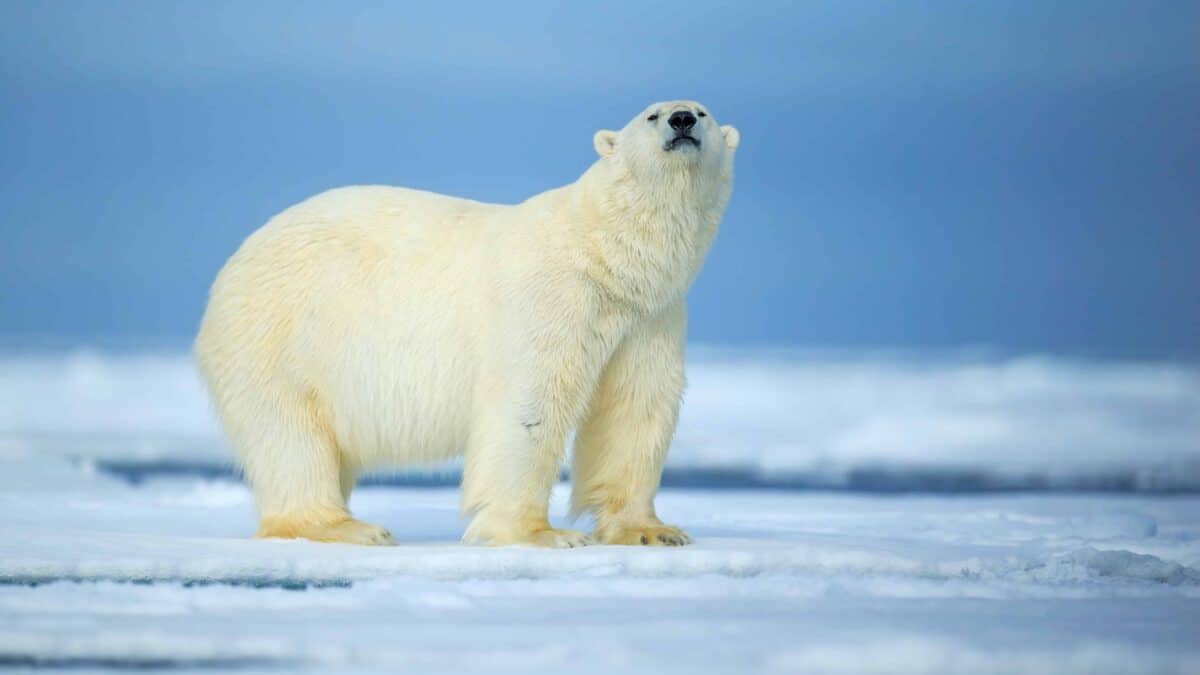
The plight of polar bears searching for food in a rapidly changing Arctic serves as a powerful warning about the consequences of climate change. These magnificent predators, perfectly evolved for a life hunting seals from sea ice, now face a future where their specialized adaptations may become liabilities rather than advantages. Their struggle is not just a conservation issue but a moral one that challenges us to consider our responsibility toward the natural world and the impacts of our collective choices.
As we look toward the future, the fate of polar bears remains uncertain. While some populations may persist in high-Arctic refugia for decades to come, others face imminent threats to their survival. What is certain is that the extent of their decline will be directly proportional to humanity’s success or failure in addressing climate change. In this way, polar bears have become powerful symbols of our changing world—their fate inextricably linked with our own choices and actions.
The image of a starving polar bear searching vainly for food on melting ice has become one of the most potent symbols of our changing planet. Yet behind these images are real animals experiencing genuine suffering—a suffering that stems directly from human activities. As we contemplate their uncertain future, we must also consider what their struggle reveals about our relationship with the natural world and our responsibility to address the environmental challenges we have created.
The story of polar bears and their food crisis is still being written, and humans hold the pen. The choices we make in the coming decades about energy, consumption, and climate policy will determine whether these Arctic icons continue to hunt successfully on sea ice or become a tragic reminder of what we have lost. Their fate challenges us all to consider what kind of world we wish to create and preserve for future generations of both humans and wildlife.
- The Blue Whale: The Largest Animal Ever Known to Have Lived - August 10, 2025
- Why Hachiko’s Story Still Moves Millions - August 10, 2025
- Saving the Andean Bear: South America’s Shy Giant - August 10, 2025

